#mergansers
Explore tagged Tumblr posts
Text

Hooded Merganser Lophodytes cucullatus
1/25/2023 San Joaquin Marsh, California
#hooded merganser#merganser#mergansers#duck#ducks#waterfowl#bird#birds#bird photography#birblr#wildlife#wildlife photos#wildlife photography#nature#nature photos#nature photography#birding#birdwatching#birding photos#my photos#california#california wildlife
74 notes
·
View notes
Text
BOTD: Hooded Merganser

Photo: Bill B
"Mergansers are our only ducks that specialize in eating fish. The Hooded is the smallest of our three native merganser species, and often seems to be the least numerous, as it tends to live around swamps and wooded ponds where it may be overlooked. A cavity nester along wooded waterways in the temperate parts of North America, it has probably benefitted by taking advantage of nest boxes put out for Wood Ducks."
- Audubon Field Guide
#birds#hooded merganser#birds of north america#north american birds#mergansers#ducks#waterfowl#birds of the us#birds of canada#birding#bird watching#birdblr#birblr#bird of the day#Lophodytes cucullatus
68 notes
·
View notes
Video
Common Merganser WWT Sussex by Adam Swaine Via Flickr: The Common Merganser, often called the Goosander in Europe, is the largest of the sawbilled ducks. All are specialist fish eaters. Common Mergansers are found throughout the northern hemisphere, and in winter can be seen in large flocks, sometimes of thousands of birds. In Europe they nest as far south as the Swiss lakes, but they are principally a bird of the northern forests, favouring fast-flowing rivers for feeding, roosting on nearby lakes at night.
#mergansers#ducks#diving ducks#RSPB#animals#beautiful#Birds#walks#waterside#water#water birds#nature watcher#natures finest#nature#nature lovers#nature reserve#britain#british#british birds#england#english#english birds#Adam Swaine#fuji#2024#counties#West Sussex#sussex#Bird#seasons
16 notes
·
View notes
Text
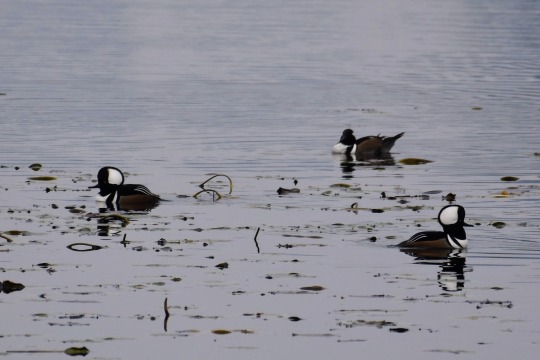
Hooded mergansers have arrived in the city! I saw these guys at Tommy Thompson Park
82 notes
·
View notes
Text

Common Merganser Red Mountain Park Mesa, Arizona, USA March, 2019
(more mergansers here someday, more ducks here)
11 notes
·
View notes
Text



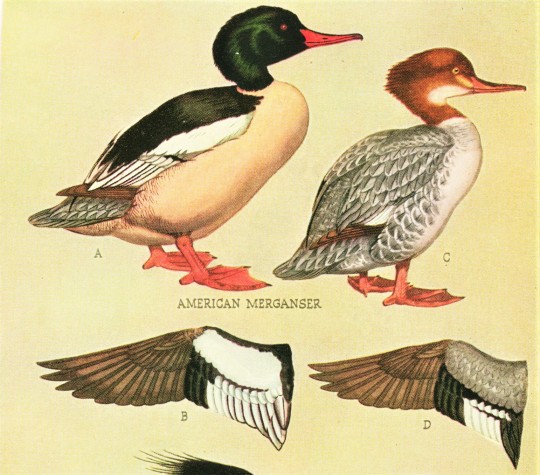
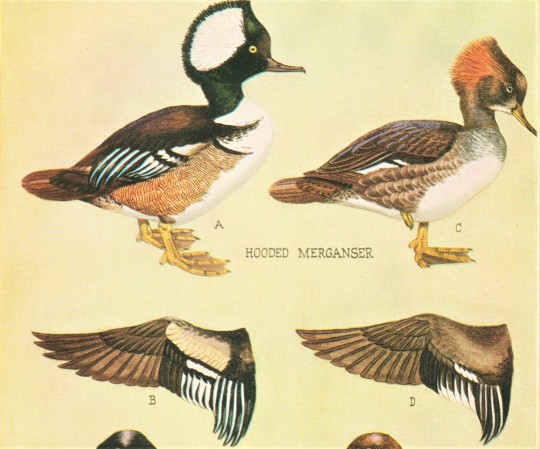

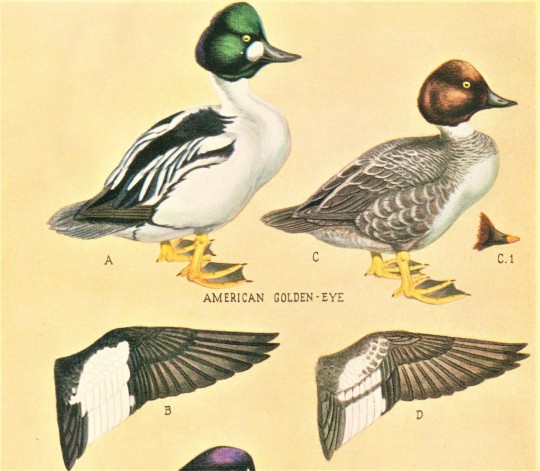
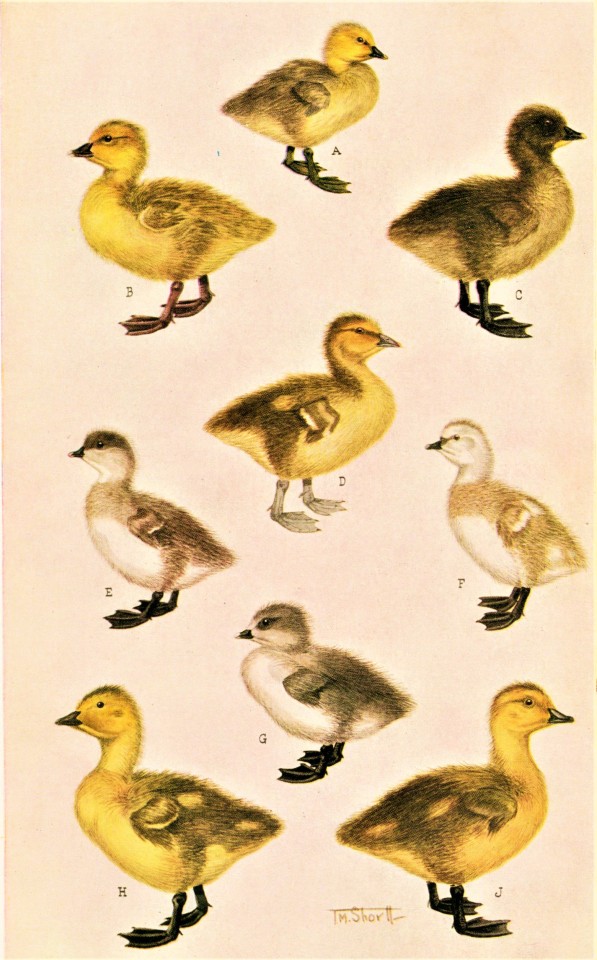
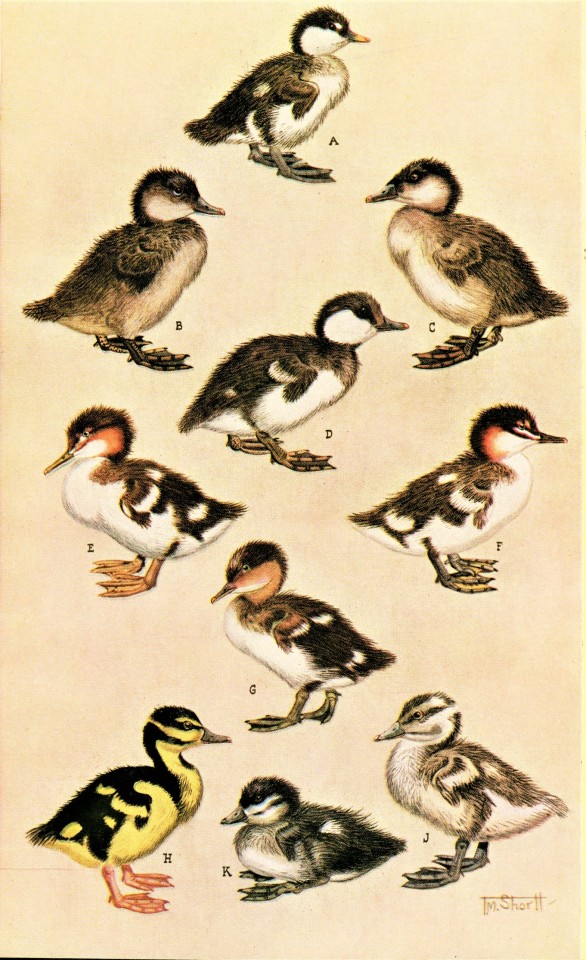
A Milwaukee Duck Feathursday
There are field guides and then there are field guides, and the famed Wisconsin conservationist and UW-Madison professor of Wildlife Management Aldo Leopold believes that this field guide is a step above: The Ducks, Geese and Swans of North America by Canadian engineer, businessman, and conservationist Francis H. Kortright (1887–1972), illustrated by the Canadian ornithologist and artist Terence Michael Shortt (1911-1986), and published in Washington, D.C. by the American Wildlife Institute in 1943.
In the introduction to the book, Leopold laments that "the existing literature on the identification of waterfowl describes manly their spring plumages. This is of little avail to the sportsman who is afield mainly in the fall, and it hardly suffices for the ornithologist, who is afield at all seasons." But in this guide, Leopold writes, "Mr. Kortright has sensed the need for a year-round waterfowl book and has done a scholarly job of writing one. . . . I do find much useful and interesting subject matter which most ornithologists omit. . . ." That Kortright has no formal training as a zoologist does not phase Leopold: "While he disclaims being an ornithologist, I detect no lack of ornithological competence in what he has written."
Of the illustrations, he writes, "Mr. Shortt's paintings, portraying all of the more important plumages of a given species, in themselves justify the publication of this volume." That both author and illustrator are Canadians also seems a plus: "To my mind it is appropriate that this book should issue from the pen of a Canadian. Canada is the birthplace of most waterfowl; this book attests her growing activity in waterfowl research and conservation."
We represent this field guide with images of some ducks most commonly found in our Milwaukee area: the Mallard, Wood Duck, and Blue-winged Teal are present in summer, with the Mallard and Wood Duck as year-round residents, while the Mergansers, Bufflehead, and Goldeneye are most prevalent in winter. We end with a couple of plates of random goslings and ducklings. Why? Well, because they're just so darn adorable!
View other posts related to Aldo Leopold.
View more Feathursday posts.
#Feathursday#ducks#The Ducks#Geese and Swans of North America#Aldo Leopold#Francis H. Kortright#Terence Michael Shortt#T. M. Shortt#American Wildlife Institute#bird paintings#wildlife artists#ornithology#field guides#mallards#wood ducks#blue-winged teals#mergansers#buffleheads#goldeneyes#ducklings#goslings#birds#birbs!
137 notes
·
View notes
Text

that's a lot of mergansers!!
10 notes
·
View notes
Text

HOODED MERGANSER - Composition Wednesday
© Erik McGregor - [email protected] - 917-225-8963
#PhotoOfTheDay#HoodedMerganser#LophodytesCucullatus#mergansers#ducks#waterfoul#AnimalEncounter#AquaticBirds#merganser#duck#birds#birdwatch#BirdWatchers#BirdLovers#BirdWatching#NYbirds#BirdsOfNY#wildlife#NYwildlife#lake#RocklandLake#RocklandLakeStatePark#NewYork#AudubonSociety#AudubonNY#AllAboutBirds#cornellornithology#cornellbirds#CornellLab#BirdPhotography
4 notes
·
View notes
Video
Hooded Merganser ( Male ) by Kip Hutchison Via Flickr: Plenty of Males for the Females showing much action swimming around them. Conditions where overcast which made for high ISO plus the Pond was in a darkest area.
#Mergansers#Merganser#Common Merganser#Hooded Merganser#Red Breasted Merganser#Water Birds#Water Bird#Ocean Birds#Sea Duck#Duck#Wildlife#Vancouver Island Wildlife#VancouverIslandBirds#Nature#British Columbia#Birds.#Diving Duck#Ducks#Ocean Duck#Ocean Ducks#flickr
2 notes
·
View notes
Text
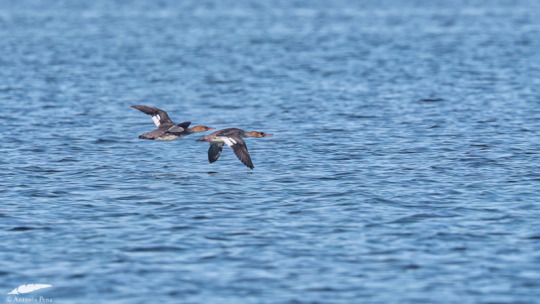
Red-breasted Merganser - Merganso-de-poupa (Mergus serrator)
Setúbal/Portugal (22/12/2023)
[Nikon D500; AF-S Nikkor 500mm F5,6E PF ED VR; 1/2500s; F6,3; 400 ISO]
8 notes
·
View notes
Text
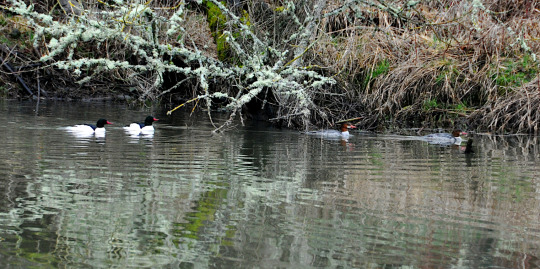
Common Mergansers
5 notes
·
View notes
Text

Common Merganser Mergus merganser
9/26/2023 Donner Lake, California
#common merganser#merganser#mergansers#duck#ducks#anseriformes#anatidae#california wildlife#california#bird#birds#bird photography#wildlife#nature#nature photography#wildlife photography#birding#birdwatching#my photos
41 notes
·
View notes
Text
BOTD: Common Merganser
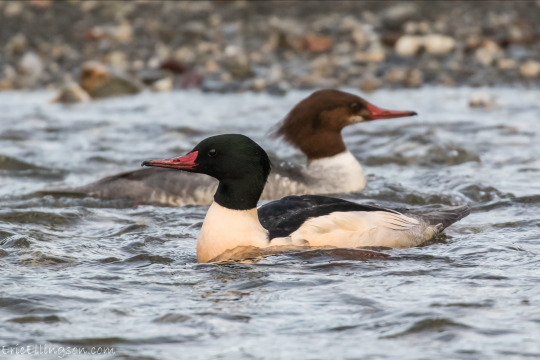
Photo: Eric Ellingson
"This fish-eating duck is the typical merganser of freshwater lakes. Its flocks are usually small, but these may combine into big concentrations sometimes at large reservoirs. Common Mergansers living along rivers may spend hours resting on rocks or on shore. The British call this bird the 'Goosander.' In some parts of Europe, with artificial nesting sites provided, the species has become a common nesting bird along city waterfronts; this has not yet happened in North America."
- Audubon Field Guide
#birds#common merganser#birds of north america#north american birds#ducks#mergansers#waterfowl#birds of the us#birds of canada#birds of mexico#birding#bird watching#birdblr#birblr#bird of the day#Mergus merganser
36 notes
·
View notes
Video
Scaly-sided merganser @ WWT Arundel by Adam Swaine Via Flickr: The scaly-sided merganser or Chinese merganser is an endangered typical merganser. It lives in Manchuria and extreme Southeast Siberia, breeding in the north and wintering in the south.Sleek, secretive diving duck with a bright orange-red bill and a long, shaggy crest. Relatively rare East Asian endemic. Male has a glossy green head and a black-and-white back. Female has a rusty brown head and gray back. Both sexes have prominent dark-edged white “scales” on the sides that distinguish them from other merganser species. Breeds in cavities along forested montane rivers and winters on fast-flowing rivers and lakes.
#mergansers#wwt#West Sussex#wetlands#arundel#waterside#walks#water#water birds#Waders#ponds#RSPB#Birds#england#english#english birds#britain#british#british birds#nature watcher#natures finest#nature#nature lovers#beautiful#wildlife#wild#WINTER#South East#seasons#uk
7 notes
·
View notes
Text
#original photographers#photography#photos#photograph#photo#photographers on tumblr#canada#british columbia#abbotsford#nature#birds#bird videos for cats to watch#bird videos#bird video#youtube shorts video#youtube shorts#youtube creator#youtube videos#youtube#mergansers#ducks and geese#cute ducks#featheredfriends#short videos#nature beauty#nature video#nature photography
2 notes
·
View notes
Text
A Frosty Morning
This morning was frosty in Bowen Park; warm enough for a good walk and cold enough for some interesting sights. Frosty moss on a logFrosty fungusSigns of wildlife, but which?Millstone River FallsIciclesIcicles over an icy streamFrozen tree sapA lovely section of the Millstone RiverMillstone RiverHooded MergansersHooded Mergansers and a Common MerganserMergansers in the Duck PondFemale Merganser
0 notes

